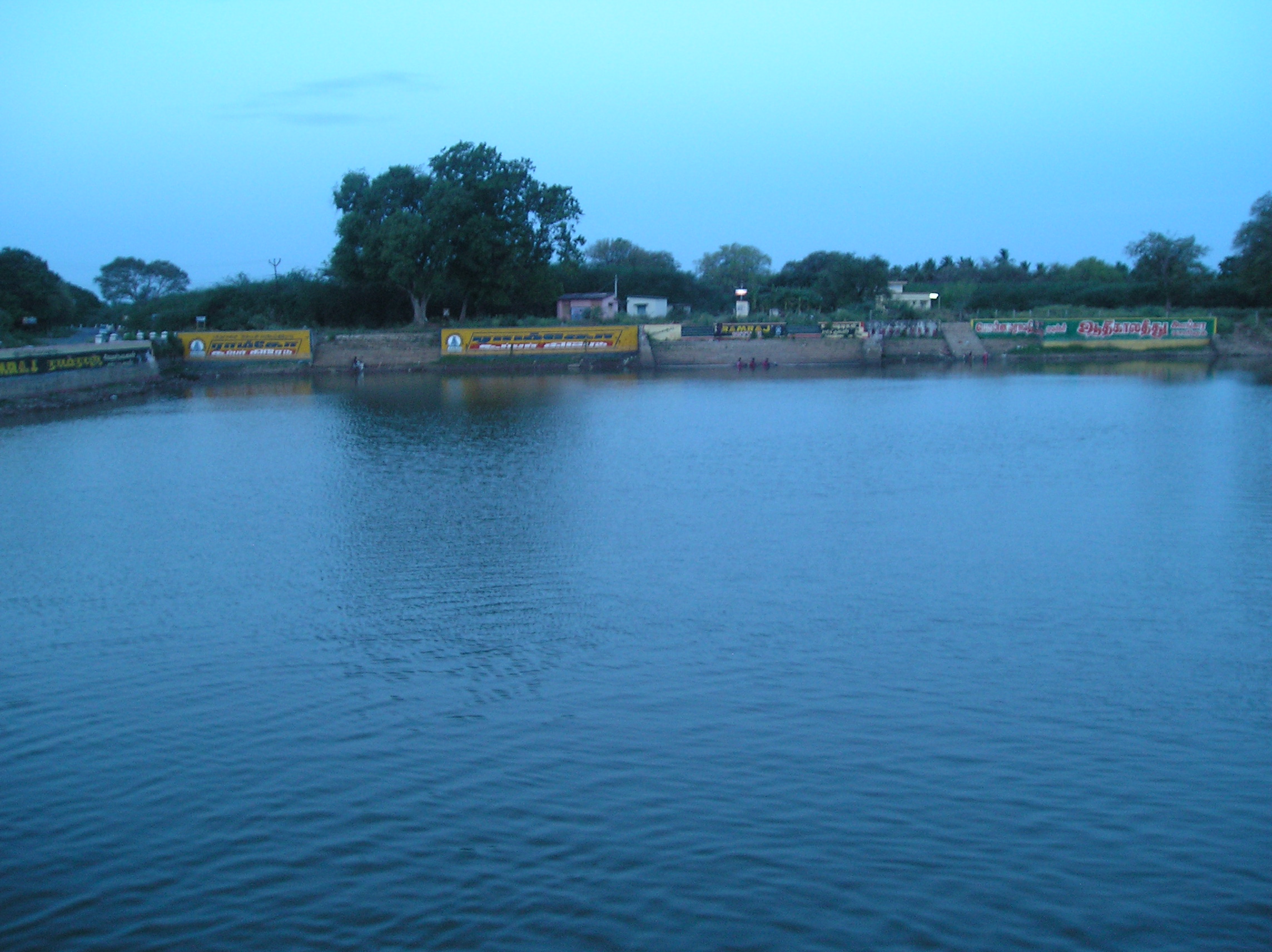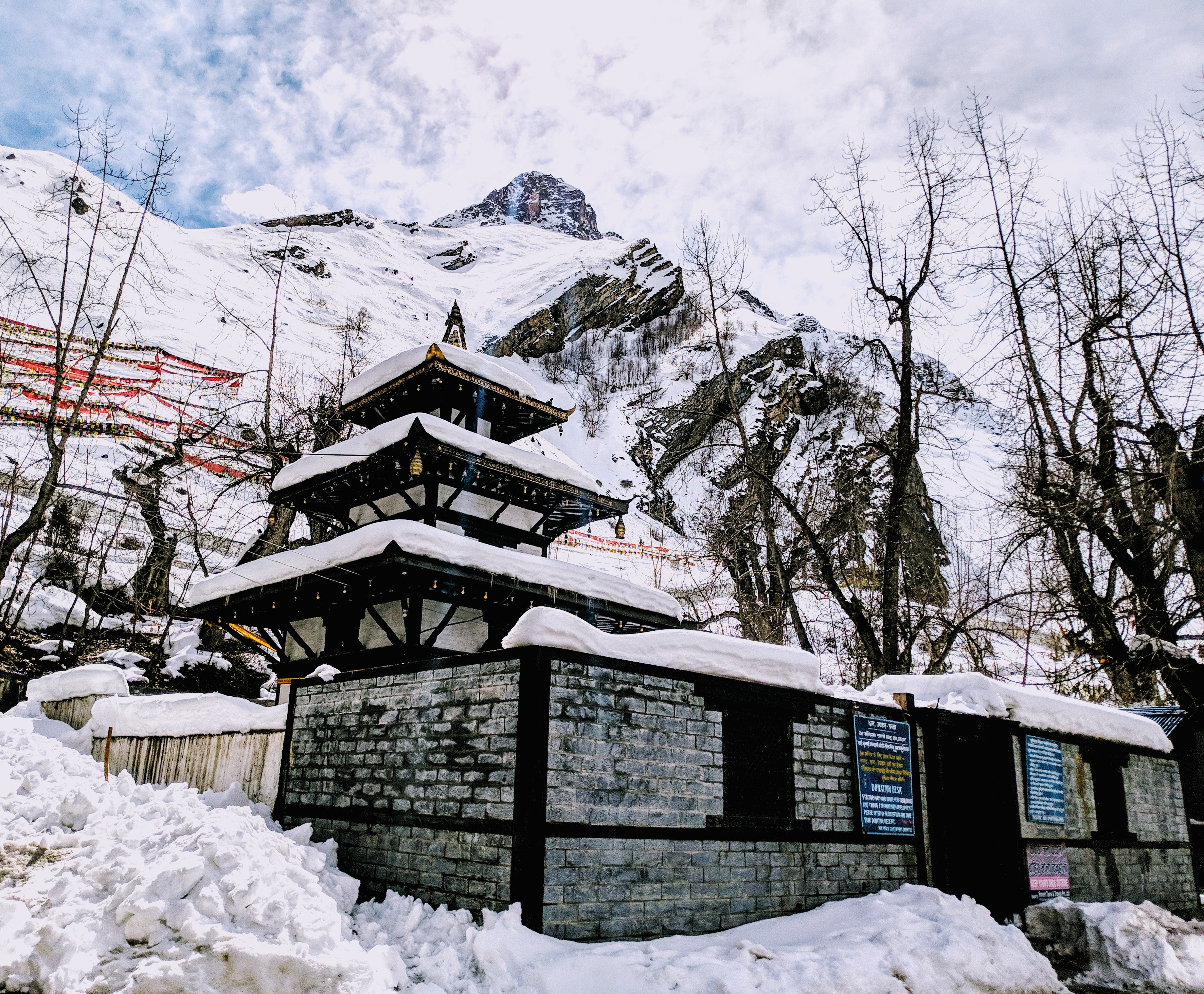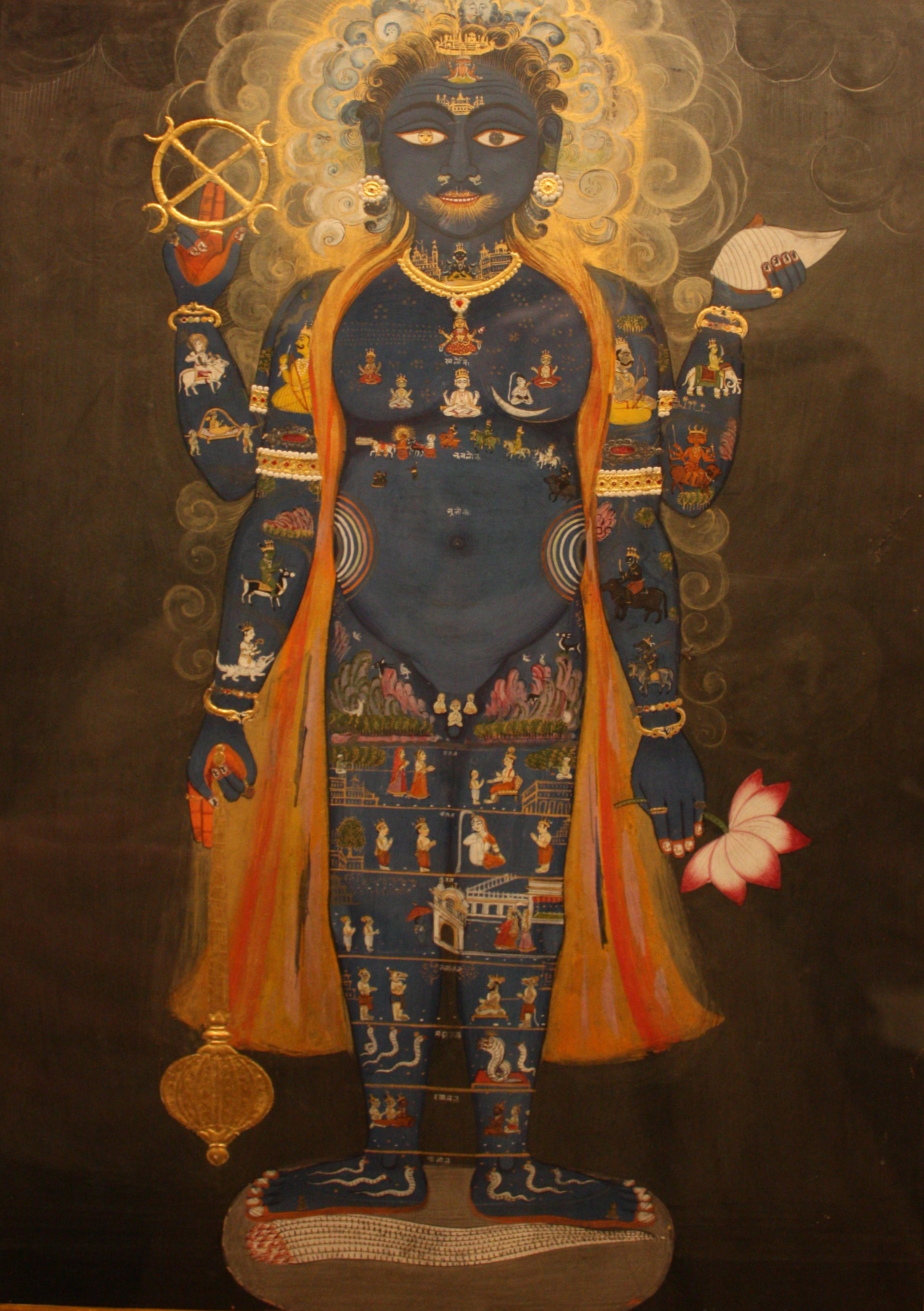|
Thirukoshtiyur
Thirukoshtiyur is a village located near Tirupathur (on Tirupathur-Sivaganga road) on the way to Sivaganga, Tamil Nadu. It is 9 km from Thirupathur. This place has an importance among Vaishnavas on account of the Sowmya Narayana Perumal temple, which is one of the 108 Divya Desams, the holy shrines of Sri Vaishnavism that were glorified by the hymns of the poet-saints called the Alvars. Legend According to the village's regional legend, during the Satya Yuga, the rishis, devas, and humans were tortured by the asura Hiranyakashipu as vengeance for his brother Hiranyaksha's death at the hands of Vishnu, in the form of his boar-avatar, Varaha. The devas and rishis then approached Brahma and Shiva for a solution. In response, Brahma, Shiva, all the devas, and the sapta rishis decided to meet at a place to discuss the issue. Finally, they chose Thirukotiyur as the place for this meeting. They came together as a group, for which the village was named (''Tiru'' - sacred, ''kōṣ� ... [...More Info...] [...Related Items...] OR: [Wikipedia] [Google] [Baidu] |
Sowmya Narayana Perumal Temple
Sowmyanarayana Perumal Temple is an ancient temple located in Thirukoshtiyur, a village in the South Indian state of Tamil Nadu, dedicated to the Hindu god Vishnu. Constructed in the Dravidian style of architecture, the temple is glorified in the ''Nalayira Divya Prabandham'', the early medieval Tamil canon of the Alvar saints from the 6th–9th centuries CE. It is one of the 108 ''Divya Desams'' dedicated to Vishnu, who is worshipped as Sowmyanarayana Perumal and his consort Lakshmi as Thirumamagal. The temple is known as the place where Ramanuja, the expounder of Vishishtadvaita philosophy preached the holy ashtakshara "Om Namo Narayanaya" to all people, irrespective of their varna. A granite wall surrounds the temple, enclosing all its shrines. The temple features a five-tiered raja gopuram or, the gateway tower and an impressive Ashtanga Vimana, which is even taller than the gopuram itself.The temple tank is located opposite to the temple, outside the main entrance. Sowmy ... [...More Info...] [...Related Items...] OR: [Wikipedia] [Google] [Baidu] |
Divya Desams
Divya Desam (, ) or Vaishnava Divya Desams are the 108 Vishnu and Lakshmi temples that are mentioned in the works of the Alvars, the poet-saints of the Sri Vaishnava tradition. By comparison, the Paadal Petra Sthalam are the 276 Shiva temples glorified in the works of the Shaiva Nayanars. Of the 108 temples, 105 are in India, one is in Nepal, and the last two are believed to be outside the earth, in Tirupparkatal and Vaikuntham. In India, they are spread across the states of Tamil Nadu (84), Kerala (11), Andhra Pradesh (2), Gujarat (1), Uttar Pradesh (4), and Uttarakhand (3). Muktinath, Saligramam is the only Divya Desam in Nepal. Tamil Nadu is home to the most number of Divya Desams with 25 of them being located in the Chennai Metropolitan Area. The Divya Desams are revered by the 12 Alvars in the ''Naalayira Divya Prabandham'', a collection of 4,000 Tamil verses. The Divya Desams follow either Tenkalai or Vadakalai modes of worship. Etymology In Sanskrit, ''divya'' means ... [...More Info...] [...Related Items...] OR: [Wikipedia] [Google] [Baidu] |
Periyalvar
Periyalvar (), also known as Vishnuchittar, was one of the twelve '' Alvar'' saints of South India who are known for their affiliation to the Vaishnava tradition of Hinduism. He was the foster father of Andal. Andal, also called as Kodhai, is the only female Alvar, and is considered to be the incarnation of Bhudevi according to Sri Vaishnavism. The verses of '' Alvars'' are compiled as the '' Naalayira Divya Prabandham'' and the 108 temples revered are classified as '' Divya Desam''. According to some accounts, Periyalvar is considered the first in the line of the twelve Alvars, while other accounts place him as the eighth. His original name was Vishnuchittar. Since he blessed Vishnu as though assuming he were an elder to the deity, he is called Periyalvar. According to Hindu legend, Periyalvar was the foster father of Andal, the only female Alvar. The works of Periyalvar contributed to the philosophical and theological ideas of Vaishnavism, the proponent behind the Bhakti m ... [...More Info...] [...Related Items...] OR: [Wikipedia] [Google] [Baidu] |
Tirupathur, Sivaganga
Tiruppattur, also spelt Tiruppathur or Thiruppathur, is a Taluk, Town Panchayat in Sivaganga district in the India state of Tamil Nadu. This town is located 22 km from Karaikudi and 27 km from Sivaganga. The town is renowned for the famous Thiruthalinathar Temple, a Padal petra sthalam of Tevaram, the sixth of 14 in the Pandyan region. Geography Tiruppathur is one of the main towns in Sivaganga district on the Karaikudi – Dindigul, Madurai – Karaikudi, Madurai – Tanjore, Manamadurai-vikravandi Highway. It is one of the oldest Towns in the Pandyan Kingdom. It served as one of the British HQs later. It was changed from Panchayat to town panchayat. The city is connected only by Roadways. The Virusuliyar River flows through Kumangudi. It is 290 km from Coimbatore, 100 km from Trichy, 60 km from Madurai, and 400 km from Chennai, 50 km from Pudukkottai. Tiruppathur is the capital town of Thiruppathur taluk. It is located near to Karaikud ... [...More Info...] [...Related Items...] OR: [Wikipedia] [Google] [Baidu] |
Shiva
Shiva (; , ), also known as Mahadeva (; , , Help:IPA/Sanskrit, [mɐɦaːd̪eːʋɐh]) and Hara, is one of the Hindu deities, principal deities of Hinduism. He is the God in Hinduism, Supreme Being in Shaivism, one of the major traditions within Hinduism. Shiva is known as ''The Destroyer'' within the Trimurti, the Hinduism, Hindu trinity which also includes Brahma and Vishnu. In the Shaivite tradition, Shiva is the Supreme Lord who creates, protects and transforms the universe. In the goddess-oriented Shaktism, Shakta tradition, the Supreme Goddess (Devi) is regarded as the energy and creative power (Shakti) and the equal complementary partner of Shiva. Shiva is one of the five equivalent deities in Panchayatana puja of the Smarta Tradition, Smarta tradition of Hinduism. Shiva has many aspects, benevolent as well as fearsome. In benevolent aspects, he is depicted as an Omniscience, omniscient yogi who lives an Asceticism#Hinduism, ascetic life on Kailasa as well as a house ... [...More Info...] [...Related Items...] OR: [Wikipedia] [Google] [Baidu] |
Ramanuja
Ramanuja ('; Middle Tamil: Rāmāṉujam; Classical Sanskrit: Rāmānuja; 1077 – 1157), also known as Ramanujacharya, was an Indian Hindu philosopher, guru and social reformer. He is one of the most important exponents of the Sri Vaishnavism tradition in Hinduism. His philosophical foundations for devotional practice were influential in the Bhakti movement. Ramanuja's guru was Yādava Prakāśa, a scholar who, traditionally, is said to have belonged to the Advaita Vedānta tradition, but probably was a Bhedabheda scholar. Sri Vaishnava tradition holds that Ramanuja disagreed with his guru and the non-dualistic Advaita Vedānta, and instead followed in the footsteps of Tamil Alvārs tradition, the scholars Nāthamuni and Yamunāchārya. Ramanuja is famous as the chief proponent of Vishishtadvaita school of Vedānta, and his disciples were likely authors of texts such as the Shatyayaniya Upanishad. Ramanuja himself wrote influential texts, such as Sanskrit bhāsyas on ... [...More Info...] [...Related Items...] OR: [Wikipedia] [Google] [Baidu] |
Alwars
The Alvars () are the Tamil poet-saints of South India who espoused ''bhakti'' (devotion) to the Hindu preserver deity Vishnu, in their songs of longing, ecstasy, and service. They are venerated in Vaishnavism, which regards Vishnu as the Ultimate Reality. Many modern academics place the lifetime of the Alvars between the 5th century and 9th century CE. Traditionally, the Alvars are considered to have lived between and . Orthodoxy posits the number of Alvars as ten, though there are other references that include Andal and Madhurakavi Alvar, making the number 12. Andal is the only female Alvar. Together with the contemporary 63 Shaivite Nayanars, they are among the most important saints from Tamil Nadu. The devotional outpourings of the Alvars, composed during the early medieval period of Tamil history, were the catalysts behind the Bhakti Movement through their hymns of worship to Vishnu and his avatars. They praised the Divya Desams, the 108 divine realms of deities aff ... [...More Info...] [...Related Items...] OR: [Wikipedia] [Google] [Baidu] |
Adhisesha
Shesha (), also known by his epithets Sheshanaga () and Adishesha (), is a serpentine demigod (Nāga, naga) and king of the Nāga, serpents (Nagaraja), as well as a primordial being of creation in Hinduism. In the Puranas, Shesha is said to hold all the planets of the universe on his hoods and to constantly sing the glories of Vishnu from all his mouths. He is sometimes referred to as Ananta Shesha. The Narayana form of Vishnu is often depicted as resting on Shesha, accompanied by his consort Lakshmi. Shesha is considered as one of the two mounts of Vishnu alongside Garuda. He is said to have descended upon Earth in the following human forms or incarnations: Lakshmana, brother of Vishnu's incarnation Rama during the Treta Yuga, and according to some traditions, as Balarama, brother of Vishnu's incarnation Krishna during the Dvapara Yuga. According to the Mahabharata (Adi Parva), his father was Kashyapa and his mother Kadru, though in other accounts, he is usually a primordial b ... [...More Info...] [...Related Items...] OR: [Wikipedia] [Google] [Baidu] |
Vaikuntha
Vaikuntha (), also called Vishnuloka (), and Tirunatu (Tirunāṭu) in Tamil language, Tamil, is the abode of Vishnu, the Parabrahman , supreme deity in the Vaishnavism, Vaishnava tradition of Hinduism,Gavin Flood, An Introduction to Hinduism' (1996). and his consort, Lakshmi, the supreme goddess of the sect. According to Ramanuja, Vaikuntha is the ''Parama Padam'' or ''Nitya Vibhuti,'' an "eternal heavenly realm", and is the "divine imperishable world that is God's abode". In Vaishnava literature, Vaikuntha is described as the highest realm above the fourteen ''lokas'' (worlds), and the place where the devotees of Vishnu go upon achieving Moksha, liberation. It is guarded by the twin deities, Jaya-Vijaya, Jaya and Vijaya, the Dvarapala, dvarapalakas, or gatekeepers of Vaikuntha. The army of Vishnu, stationed at Vaikuntha, is led by Vishvaksena. The planets of Vaikuntha are described as being full of golden palaces and hanging gardens that grow fragrant fruits and flowers. The p ... [...More Info...] [...Related Items...] OR: [Wikipedia] [Google] [Baidu] |
Kshira Sagara
In Hindu cosmology, the ''Kshira Sagara'' (, ; ; ; Telugu: Pala Samudram) or Ocean of Milk is the fifth from the centre of the seven oceans. It surrounds the continent known as Krauncha. According to Hindu scriptures, the Deva (Hinduism), devas and asuras worked together for a millennium to churn this ocean in order to acquire amrita, the nectar of immortality. The episode is mentioned in the Samudra manthan, ''Samudra Manthana'' chapter of the Puranas, a body of ancient Hindu legends. The Kshira Sagara is described as the place where the deity Vishnu reclines over his serpent-mount Shesha, accompanied by his consort, Lakshmi. Etymology The "Ocean of Milk" is the English translation of the Sanskrit terms ', ' or ', from ''Kshira, kṣīra'' "milk" and ', ' "water, ocean" or ' "ocean." The term varies across Indic languages, referred to as ''Khir Shaagor'' in Bengali language, Bengali, ''Tiruppāṟkaṭal'' in Tamil language, Tamil, and ''Pāla Samudram'' in Telugu language, Telu ... [...More Info...] [...Related Items...] OR: [Wikipedia] [Google] [Baidu] |
Loka
Loka () is a concept in Hinduism and other Indian religions, that may be translated as a planet, the universe, a plane, or a realm of existence. In some philosophies, it may also be interpreted as a mental state that one can experience. A primary concept in several Indian religions is the idea that different lokas are home to various divine beings, and one takes birth in such realms based on their karma. Hinduism Three lokas The most common classification of lokas in Hinduism is the Trailokya, or the three worlds. The concept of the three worlds has a number of different interpretations in Hindu cosmology. In Hindu literature, the three worlds refer to either the earth (Bhuloka), heaven ( Svarga), and hell (Naraka), or the earth (Bhuloka), heaven (Svarga), and the netherworld ( Patala) Bhuloka In the Narada Purana, Bhuloka is identified with the planet Earth, the world of human beings. It is described to be split up into seven regions, referred to as dvipas (islands). T ... [...More Info...] [...Related Items...] OR: [Wikipedia] [Google] [Baidu] |
Narayana
Narayana (, ) is one of the forms and epithets of Vishnu. In this form, the deity is depicted in yogic slumber under the celestial waters, symbolising the masculine principle and associated with his role of creation. He is also known as Purushottama, and is considered the Supreme Being in Vaishnavism. Etymology Narayan Aiyangar states the meaning of the Sanskrit word 'Narayana' can be traced back to the Laws of Manu (also known as the ''Manusmriti'', a ''Dharmaśāstra'' text), which states: This definition is used throughout post-Vedic literature such as the ''Mahabharata'' and the ''Vishnu Purana''. 'Narayana' is also defined as the 'son of the primeval man', and 'Supreme Being who is the foundation of all men'. *'Nara' (Sanskrit नार) means 'water' and 'man' *'Yana' (Sanskrit यान) means 'vehicle', 'vessel', or more loosely, 'abode' or 'home' L. B. Keny proposes that Narayana was associated with the Dravidian, and ultimately, the Indus Valley Civilis ... [...More Info...] [...Related Items...] OR: [Wikipedia] [Google] [Baidu] |










